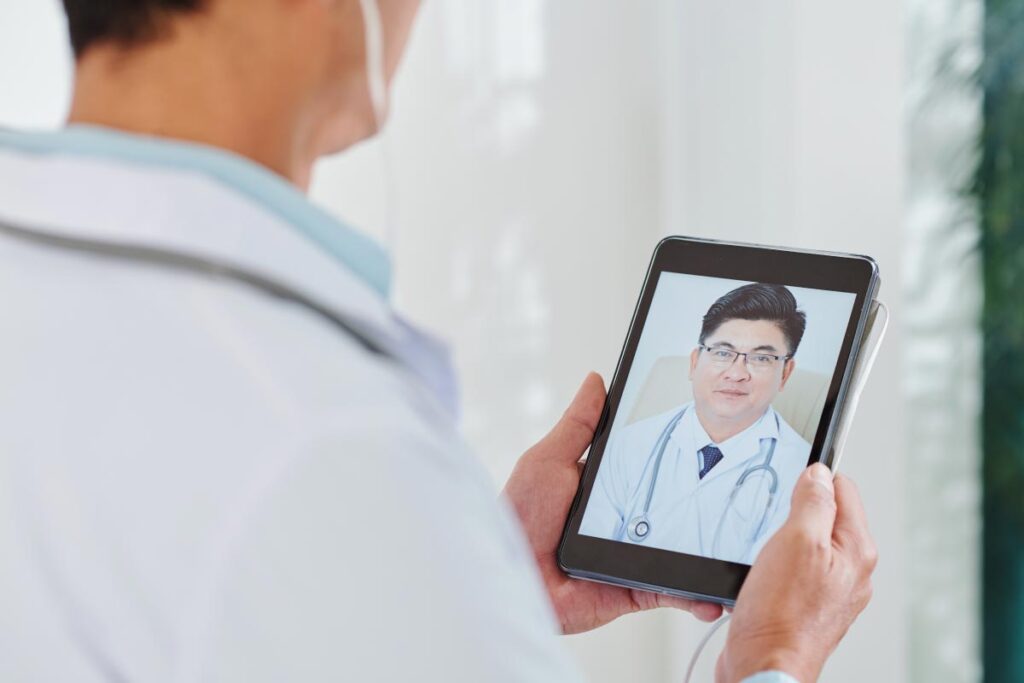
The lockdown that accompanied the COVID-19 pandemic meant that people had to adapt to a life spent indoors and at home. While the world around us ground nearly to a halt with empty streets and stores shuttered against visitors, health issues unfortunately persisted and people still had a need to meet with doctors.
As a result, telemedicine became normalized for those seeking medical treatment, and it still remains as a convenient and easy way for patients to receive consultations from their doctors.
Below, we’ll take a look at what exactly telemedicine is and how we use it at Sun Health Center to provide our clients with unfettered access to healthcare wherever they may be located.
How Telemedicine Works
Telemedicine is pretty much exactly what it sounds like – remote access to medical professionals via an electronic device. Using a secure and private connection, for instance Sun Health’s state-of-the-art digital platform, patients are able to meet with and consult their doctors in a way that maintains the connectivity and compassion found in face-to-face interaction.
While lockdown during the pandemic popularized telemedicine, its benefits have been far reaching for certain patients even before then. Certain patients are simply unable to easily leave their homes and travel, and need access to doctors from their own homes. Other patients prefer the anonymity that comes along with remote doctor visits. Whatever the reason, telemedicine is an effective way to meet with and consult a doctor.
What Are the Three Different Types of Telemedicine?
Generally speaking, there are three types of telemedicine. There is real-time interactive medicine, which is what we described above. Patients meet with medical professionals via electronic means and exchange real-time information and consultation.
Then there is store-and-forward telemedicine, also called asynchronous telemedicine, which is simply when doctors share patient information like charts, lab reports, video records, etc., with other doctors and specialists in another location. It’s not much different than a typical email or communication, except it’s done through a specially made secure platform that’s designed to comply with HIPAA regulations and protect the patient’s privacy.
The third type is remote monitoring, or telemonitoring, which allows a patient’s vitals and signs to be monitored from a distance. This is typically used for high-risk patients who have been released from a hospital, but who still need to be watched by a medical professional.
How Effective is Telemedicine?
The short answer is that telemedicine can be very effective. Many studies have shown it to be at least as effective as in-patient recovery.
One of the major benefits of telemedicine is that it encourages patients to stay in recovery longer than they otherwise might by providing convenient access to their medical professionals.
At Sun Health, we use telemedicine to help with our treatment of patients recovering from addiction and mental health conditions, and it’s been highly effective in both cases. Usually, we suggest telemedicine in conjunction with regular in-person appointments both for therapy and recovery, as this approach seems to have the best results.
We believe that medication is only one aspect of treating our patients, and we encourage a healthy lifestyle to go along with medical treatment to improve the well-being of our patients. Telemedicine makes this easier to achieve by freeing our patients up to better accommodate a healthier way of life, like exercising, managing stress, and getting an adequate amount of sleep.
To learn more about how our telemedicine can be used to accommodate your needs, call or email us today and book a free consultation. A healthier you is just a step away!
This article has been medically reviewed by our staff at Sun Health Medical Center in Deerfield Beach, Florida.
